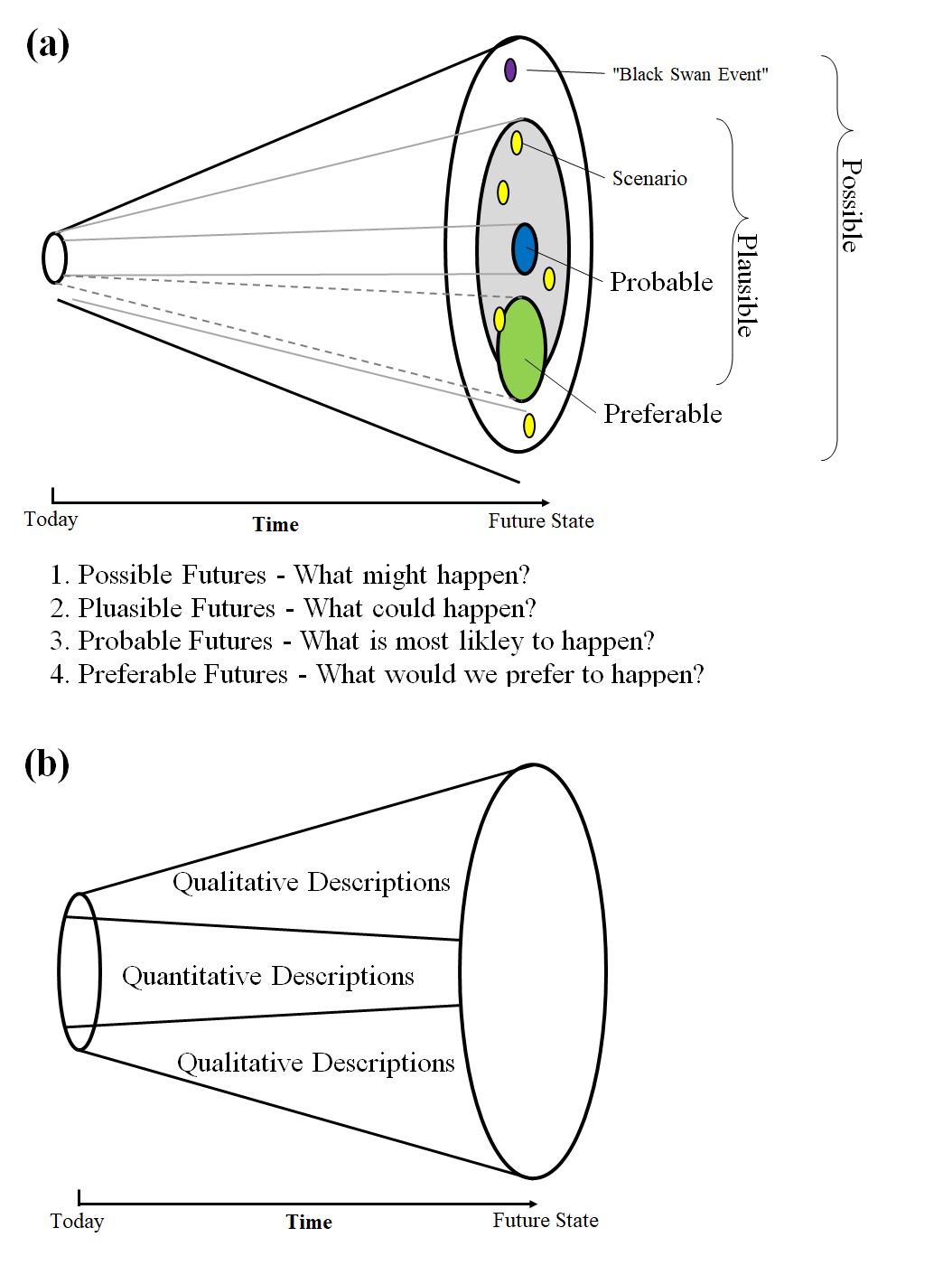Scenarios in FHI Strategy for Developing Scenarios Scope
March 28, 2019 at 12:36 AMScenario planning, or scenario analysis, is a framework for exploring options and developing more robust plans in the face of irreducible uncertainty (Peterson et al. 2003). Two aspects of scenario planning will guide the steps for developing scenarios identified in this section:
-
Firstly, scenarios, by definition, are highly uncertain yet plausible futures states of a system under different climate projections, different proposed management or development plans such as the placement of a dam or expansion of irrigation, or different uncertain effects of a management or development plan on the system such as low, medium or high deviations from natural flow regime under a dam siting proposal or diffuse changes, such as forest loss or increases in fertilizer use. The objective of engaging stakeholders is not just to identify what is a possible or probable future state of the basin - but also to identify the gaps and risk between them and the preferable future state of the system.
-
Secondly, as projections move from the current state to a future state, the amount of quantitative information to base predictions of the future state on will continue to decrease. A 20-year scenario is likely to draw on more quantitative data (with a higher degree of confidence) rather than a 50-year time line. Inevitably, many of the indicators will only have qualitative information (such as direction of change) rather than a new numerical value.

Figure (a) Possible, Plausible, Probable and Preferable futures (Voros 2001); and (b) Qualitative and Quantitative description over time (Amer et al. 2013).